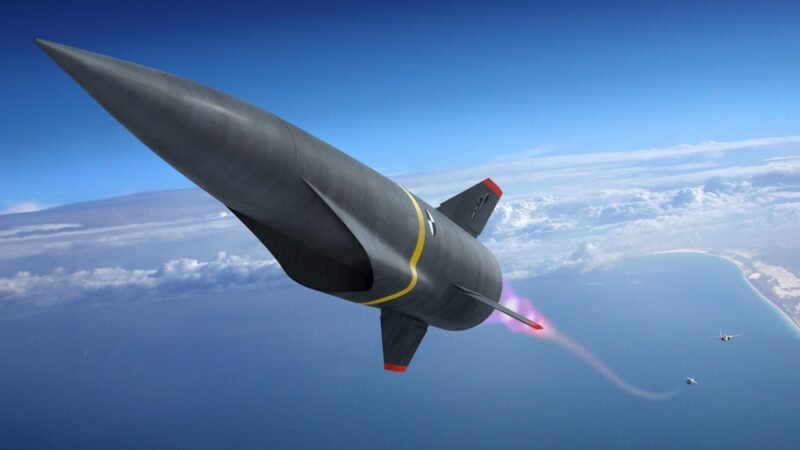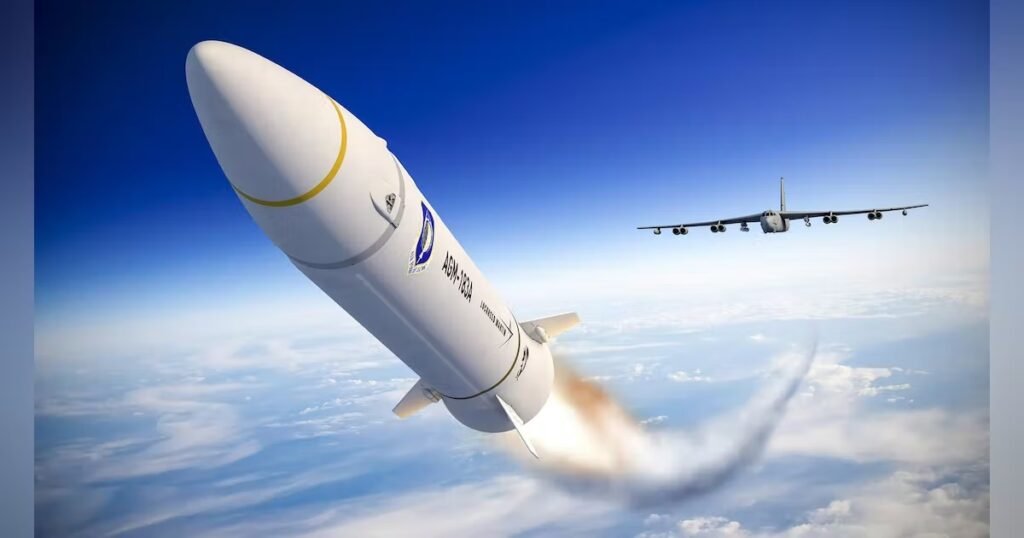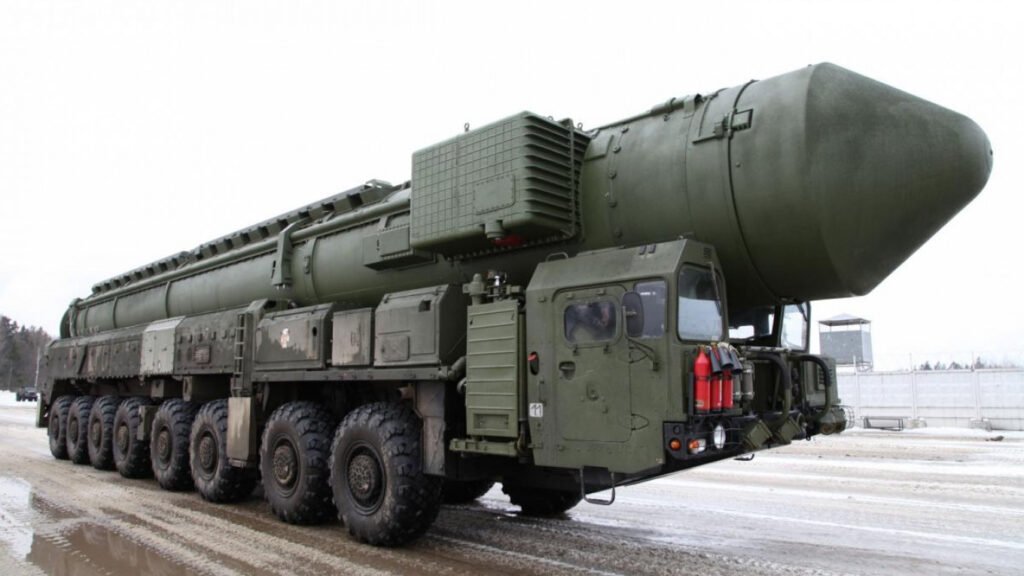New Age Hypersonic Race Has Many Elite Contenders

The success of Russia and China in developing hypersonic weapons has prompted a collaboration between the United States, United Kingdom, and Australia – members of the AUKUS military partnership founded in 2021 – to develop hypersonic weapons and defence.
Since the start of the nuclear age, we’ve been living among weapons that could technically destroy the world several times. In the 1960s and 70s, there were billions of dollars poured into nuclear and chemical ones.
At the peak of the Cold War, the United States and the former Soviet Union each possessed about 60,000 nuclear weapons. This figure has now been reduced to around 11,000. However, even 100 of those nuclear weapons would cause massive difficulties, including widespread starvation and exposing everyone on the earth to extreme levels of UV radiation.

The concept of Mutually Assured Destruction was and continues to be a deterrent to the nuclear threat.
Any nuclear launch by Russia or the United States would be met with swift retaliation by the other side, resulting in devastating destruction for both countries.
Hypersonic weapons are challenging that principle. They are extremely tough to stop, even by the planet’s most modern air defence systems. They can’t do the arithmetic quickly enough to intercept these missiles, especially since they can manoeuvre, which raises severe strategic concerns for missile defence.
Hypersonic indicates that it travels substantially faster than the speed of sound.
That speed is known as Mach 1. The distance you travel in seven minutes (124kms in seven minutes) at the speed of sound (1225kms/hr) is approximately ten times more than the distance you travel driving down a road at 100 km/hr (12kms in 7 minutes).
Commercial planes fly subsonically, or slower than the speed of sound; the Concorde, famously travelling at double the speed of sound, is called hypersonic; anything over Mark 5, or around 6000 kph, is considered hypersonic.
Hypersonics have been around for a long time. An American bumper rocket achieved 2.3 kilometres per second in 1949. That is almost seven times the speed of sound. Several decades later, NASA built a prototype of a rocket plane that could potentially fly at eight times the speed of sound, but the project was never completed.
NASA successfully flew its experimental hypersonic vehicle, or Hyper X, at slightly under seven times the speed of sound in 2004.
Almost all intercontinental ballistic missiles are hypersonic, meaning they fly at speeds greater than Mach 5. All of those instances, however, could only move at such speeds for a short duration.
Intercontinental ballistic missiles have been used since the 1960s, with a portion of their flight path hypersonic. The difference between an intercontinental ballistic missile and a cruise missile is that the former takes a known course. Ballistic missiles are launched on a massive rocket and follow a predictable gravity-driven trajectory that sends them into space and back into the atmosphere.
Let us now consider hypersonic missiles. They are launched atop smaller rockets, which maintain them in the upper atmosphere. They can move around in an unpredictable manner there. And then, in the closing seconds of flight, dive and hit a target. Because of the atmospheric sweet spot, they can only be identified in the closing phases of flight.
They’re able to move side to side very quickly, so they’re more like the snitch in Harry Potter’s Quidditch game. Much more difficult to catch and predict the movement.
Right now, there are two types of hypersonic missiles being developed. The first, a Hypersonic Glide Vehicle or HGV, relies on a rocket to boost it to a high altitude. It then glides to its target along the upper atmosphere, manoeuvring along the way. The second hypersonic cruise missiles also travel at a lower altitude, but the difference is they are powered by a high-speed jet engine called a scram jet. This allows them to easily change course and be fired from more places like jets and submarines. Scramjet is different from a normal aircraft engine because it has no turning blades or components inside it. It’s a big tube where you mix fuel and air, they burn, and it provides forward propulsion because the vehicles are moving so fast.
Russia and China have made some serious inroads into hypersonic technology. The Kremlin is the first one to use a hypersonic weapon in the war. Kinzhal hypersonic missiles were used to target an ammunition warehouse in Ukraine’s West.

The Russians are also now deploying the Avangard hypersonic glide vehicle (HGV) on the ICBMs.
The DF 17 ballistic missiles designed to launch a hypersonic missile were displayed during China’s 2019 military parade. They tested two nuclear-capable hypersonic projectiles, which circled the globe in 2021.
Russia and China have openly said that their investments in hypersonic weapons are to counter American influence. China’s R & D infrastructure is so robust that they pose probably the most potent threat in the hypersonic arena.
And so what does the US do? It’s now racing to catch up.
The United States lagged in hypersonics and was unable to deter Russia. Only conventional hypersonic or non-nuclear weapons have been committed to development by the United States.
A hypersonic nuclear weapon can be 100 times less accurate than the conventionally armed weapon and still accomplish the mission because of the relative size of its blast radius. A conventional weapon has a much smaller boom. So it has to be significantly more accurate, and that’s really sort of slowed the US’s progress down. The US Department of Defence has requested 4.7 billion US dollars for hypersonic weapons research. And that’s on top of the 3.8 billion they asked for last year. Right now, the US has two functional scramjet missile technology demonstrators. No nation has a hypersonic scramjet-powered missile in service. So the US looks to be in the lead.
Hypersonic weapons technology is now being developed in Europe, Japan, India, Iran, Israel, South Korea, Brazil, Australia, and North Korea. India already has a supersonic cruise missile Brahmos. Efforts are being made to develop a hypersonic version of the cruise missile. Once all these nations have these weapons and services, the real race will become who’s got the most capable weapons instead of just who has the fastest. One report found there’s probably less than a decade now to substantially hinder the proliferation of hypersonic missiles and their associated technologies.


















